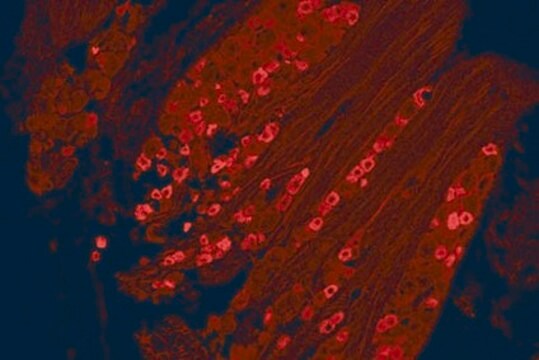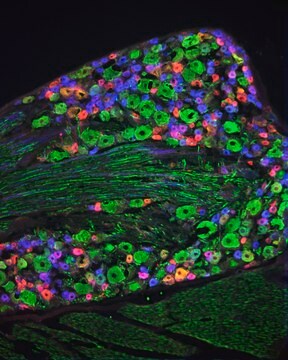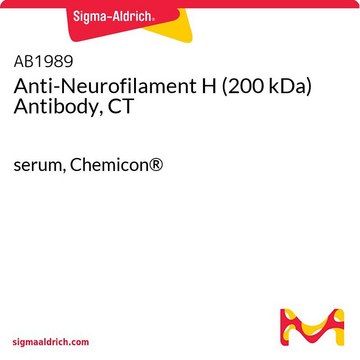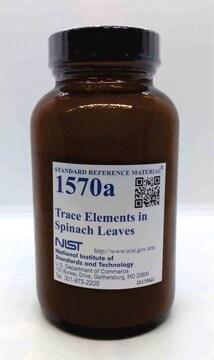MAB5262
Anti-Neurofilament H (200 kDa) Antibody
CHEMICON®, mouse monoclonal, RT97
Synonym(s):
Anti-CMT2CC, Anti-NFH
About This Item
Recommended Products
Product Name
Anti-Neurofilament 200 kDa Antibody, clone RT97, clone RT97, Chemicon®, from mouse
biological source
mouse
Quality Level
antibody form
purified immunoglobulin
antibody product type
primary antibodies
clone
RT97, monoclonal
species reactivity
mouse, human
species reactivity (predicted by homology)
rat
manufacturer/tradename
Chemicon®
technique(s)
immunohistochemistry (formalin-fixed, paraffin-embedded sections): suitable
western blot: suitable
isotype
IgG1
NCBI accession no.
UniProt accession no.
shipped in
wet ice
target post-translational modification
unmodified
Gene Information
human ... NEFH(4744)
mouse ... Nefh(380684)
rat ... Nefh(24587)
General description
Specificity
Immunogen
Application
1-10 μg/mL
Immunohistochemistry(paraffin):
Representative images from a previous lot.
Optimal Staining With Citrate Buffer, pH 6.0, Epitope Retrieval: Human Cerebellum
Optimal working dilutions must be determined by end user.
Neuroscience
Neurofilament & Neuron Metabolism
Neuronal & Glial Markers
Quality
Western Blotting Analysis:
1:500 dilution of this antibody detected NEUROFILAMENT on 10 µg of Mouse brain membrane lysates.
Target description
Physical form
Storage and Stability
Analysis Note
Brain
Cultured neurons
Other Notes
Legal Information
Disclaimer
Not finding the right product?
Try our Product Selector Tool.
recommended
Storage Class Code
10 - Combustible liquids
WGK
WGK 2
Flash Point(F)
Not applicable
Flash Point(C)
Not applicable
Certificates of Analysis (COA)
Search for Certificates of Analysis (COA) by entering the products Lot/Batch Number. Lot and Batch Numbers can be found on a product’s label following the words ‘Lot’ or ‘Batch’.
Already Own This Product?
Find documentation for the products that you have recently purchased in the Document Library.
Our team of scientists has experience in all areas of research including Life Science, Material Science, Chemical Synthesis, Chromatography, Analytical and many others.
Contact Technical Service







